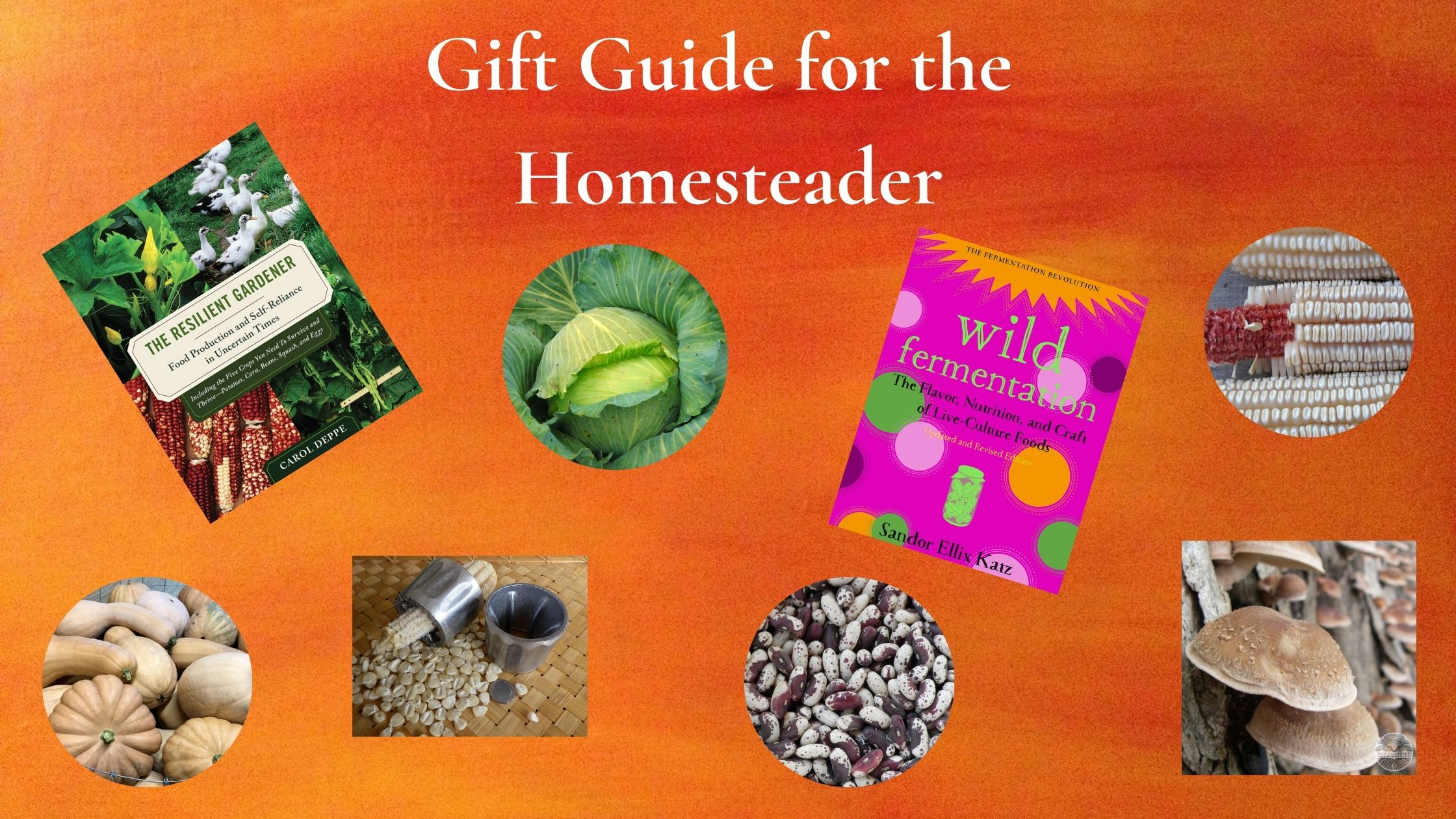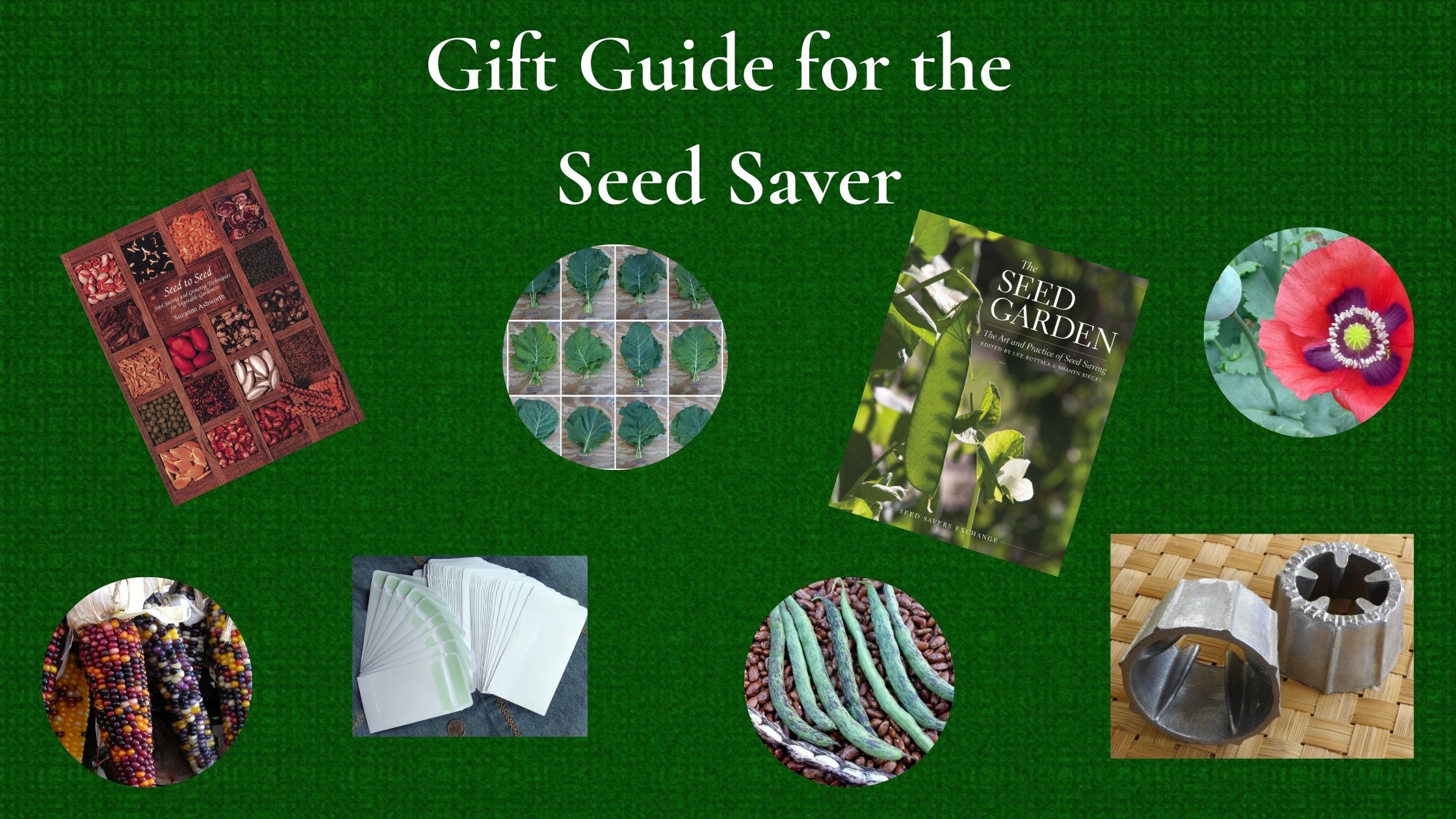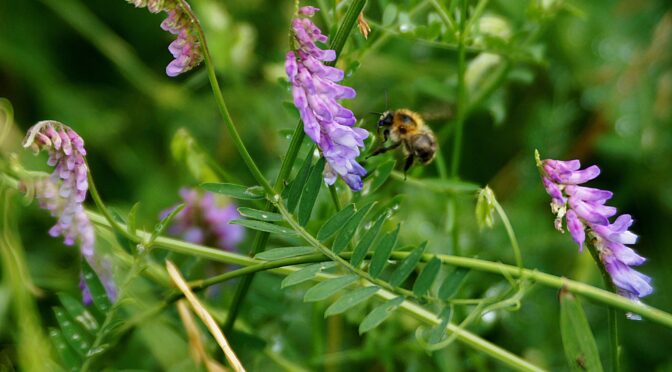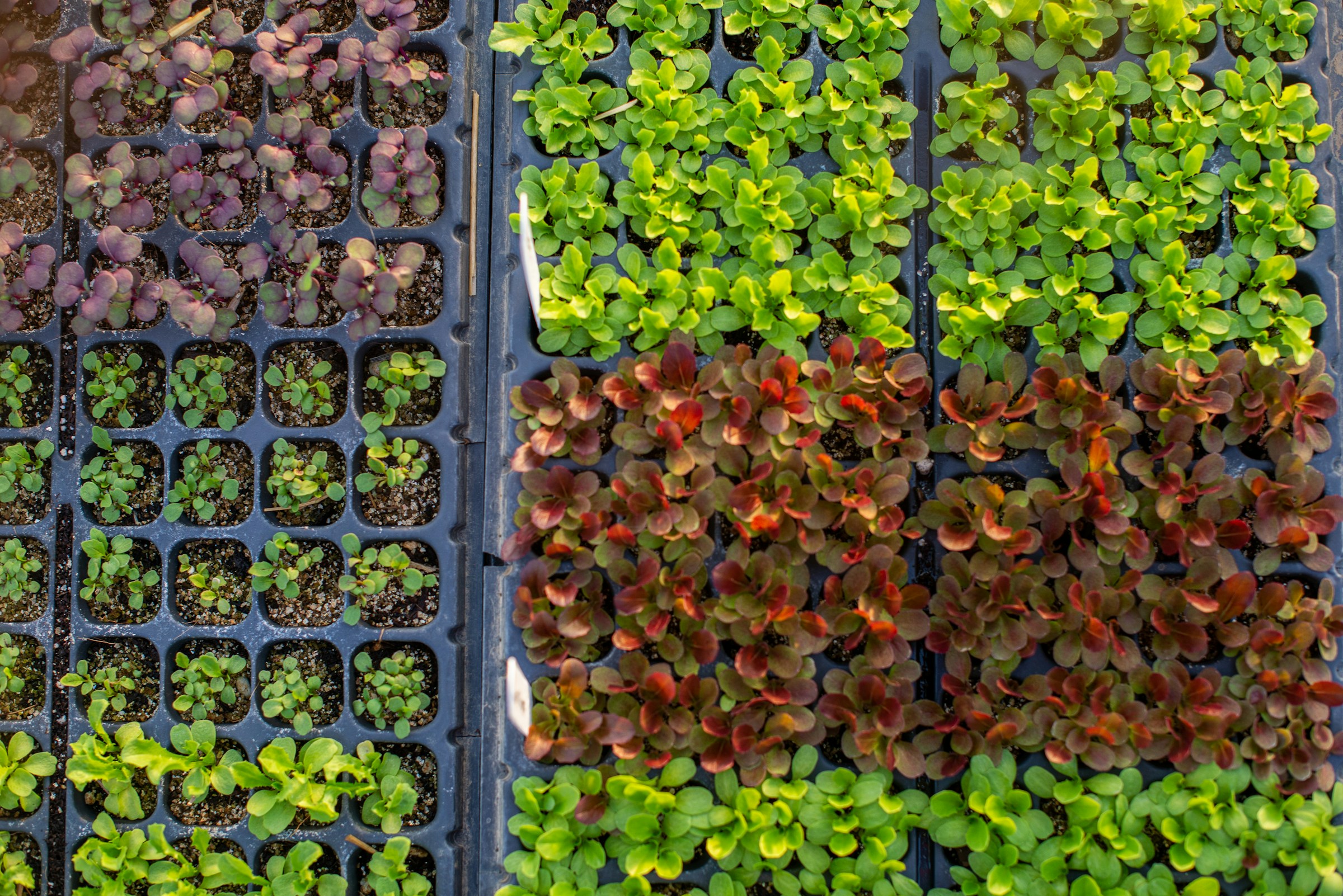The holiday season is upon us! If you have a gardener, herbalist, homesteader, seed saver, or other grower in your life, you’re in luck. We’ve put together a gardener gift guide filled with ideas. For each list, we’ve included a few crop ideas plus handy tools, supplies, and books.
 The Beginner Gardener
The Beginner Gardener
Welcome a friend, neighbor, or family member to gardening crew with a few of these basic essentials. We’ve picked out a few easy crops for beginners plus some supplies that will help them succeed.
- Matt’s Wild Cherry Tomatoes
These little tomatoes pack tons of flavor into a ferocious little package. The plants are extremely resilient and virtually invincible against common tomato diseases. - Garden Guides by Ira Wallace
Southern Exposure’s own gardening expert Ira Wallace gives home gardeners the regionally specific information needed to succeed in our hot, humid climate. Ira offers one guide to the Southeast and five state-specific guides. - Green Salad Bowl Lettuce
Help your friend grow their very first salad with easy, cut and come again Green Salad Bowl lettuce. - CobraHead Mini ‘Steel Fingernail’
Make weeding a bit easier with this solid tool made from USA steel. SESE and National Garden Club testers were really impressed with the tool and all it can do. - Color Fashion Mix Sunflower
Help them brighten their space with the easy-to-grow Color Fashion Mix Sunflower. - Green Finger Slicing Cucumber
Give the gift of crisp, summer cucumbers with this productive, tasty, disease resistant variety from Cornell University. - SESE Gift Card
Want to help them fill out their whole garden with their favorite seeds? Grab a SESE gift card so they can fill their own cart.
 The Heirloom Tomato Lover
The Heirloom Tomato Lover
Few crops seem to develop the same ardent following as tomatoes. If you have a heirloom tomato fan in your life try some of these:
- Aunt Lou’s Underground Railroad Tomato
Give the gift of a legacy with Aunt Lou’s Underground Railroad Tomato. Seeds for these dark pink, tangy tomatoes were carried through the Underground Railroad by an unnamed black man as he crossed to freedom in Ripley, OH, from KY. Seeds were passed on to Aunt Lou, who passed them on to her great nephew, and eventually on to heirloom tomato enthusiast Gary Millwood. - Epic Tomatoes: How to Select and Grow the Best Varieties by Craig LeHoullier
Give tomato growing and selection advice from the very best. Author Craig LeHoullier introduced Cherokee Purple to SESE and the world. He has grown thousands of tomato varieties, most of them in hot and humid North Carolina, and here he shares his hard-won wisdom on how to grow great tasting tomatoes. - 50 Self-Seal Seed Packets
Help your loved one neatly package their ever-growing collection of heirloom tomato seeds. These self-seal packs are easy to use and great for taking to spring seed swaps! - Amy’s Apricot Mix Cherry Tomato
Add a unique variety to your friend’s collection with Amy’s Apricot Mix. These colorful cherries are always a hit at our tomato tastings! - Johnny’s Seedling Mat
Tomato seedlings love a bit of heat! Get your friend off to a great start this spring with a seedling heat mat from Johnny’s. - Cherokee Purple Tomato
Gift the king of tomatoes, Cherokee Purple. Few tomatoes have gained the renown as this delicious, dusky, pre-1890 Tennessee heirloom. - Tomato Towers
At SESE we use DIY tomato trellises like cattle panels and the Florida weave, but if you know someone who uses tomato cages, they’d probably love to have a sturdy version from Gardener’s. - Wooden Garden Labels
Help your loved one keep track of all their precious tomato varieties with these wooden garden labels. Made from uncoated New England White Birch.
 The Herbalist
The Herbalist
Whether you’re loved one is just starting the herbal journey or has been creating tinctures for decades, these are sure to brighten their winter.
- Growing and Marketing Ginseng, Goldenseal and Other Woodland Medicinals by W. Scott Persons and Jeanine M. Davis
Give the herbalist in your life all the information they need to grow tricky woodland medicinals with success. This updated and expanded edition gives recommended methods of growing and marketing ginseng, goldenseal, ramps, black cohosh, bethroot, bloodroot, blue cohosh, false unicorn, galax, mayapple, pinkroot, spikenard, wild ginger, wild indigo, and other native woodland medicinals. - Resina Calendula
Herbalists prize this bright yellow flower! Give your friend a pack so they can create homemade salves, lotions, and more this season. - Granite Mortar and Pestle
Herbalism is much more fun when you have beautiful tools. This beautiful, solid granite mortar and pestle from our friends at Mountain Rose Herbs is perfect for grinding herb, seeds, and roots. - Spilanthes
Spilanthes is a fun plant for any herbalist to get their hands on. It’s used in medicinal practices around the world and creates a strong tingling sensation in the mouth when consumed raw. - Mesh Strainers
Give the gift of convenience with this all purpose stainless steel strainer, which has been constructed of the perfect mesh with the herbalist in mind. A fabulous tool to be used in the production of extracts, herbal oils, tea infusions and decoctions, and in the manufacturing of some body care products. - Anise-Hyssop (Licorice Mint)
Give the gift of an easy-to-grow, native perennial medicinal and culinary herb. It’s wonderful for soothing teas and attracts pollinators. This herb has a lot going for it! - Ashwagandha
Help fill out your herbalist’s garden with Ashwagandha. This unassuming herb is celebrated for its immune-boosting properties and ability to enhance resilience to stress.
 The Homesteader
The Homesteader
Have a friend that won’t stop talking about food preservation or a family member who’s constantly dreaming about buying land and getting chickens? You might have a homesteader on your list!
- The Resilient Gardener by Carol Deppe
A great read for intermediate and advanced growers by an Oregon farmer and plant breeder, Carol Deppe. She focuses on 5 main subsistence foods (corn, beans, squash, potatoes, and…ducks!) Great information on growing, cooking, and storing the tastiest and most nutritious varieties. - Magic Cushaw Winter Squash
Give the gift of good production and nutritious food with Magic Cushaw. Seed saver and grower Julia Asherman says, “We named it Magic Cushaw because it is so good and always pulls through, resistant to most everything, and now it is the only winter squash we grow.” - Wild Fermentation by Sandor Katz
This book is a favorite among homesteaders and here at SESE, too. It contains nearly 100 home recipes for vegetable ferments (sauerkraut, kimchi, pickles); bean ferments (miso, dosas); dairy ferments (yogurt); cheesemaking (and vegan alternatives); sourdough and other grain fermentations from Cherokee, African, Japanese, and Russian traditions; vinegars and alcohol. - Tennessee Red Cob Dent Corn
The seedstock for this pre-1900 was supplied by Harold Jerrell who reported that in 1995 this variety produced a good crop on only 2 in. of rain from mid-June until the first of September. It was one of the driest years on record in his growing area in Virginia, and was the only variety that produced. Tennessee Red Cob is great for polenta, cornbread, corncob pipes, and corncob jelly. - Corn Sheller
Give your family member a helping hand with this hand-held aluminum sheller that makes quick work of shelling corn. - Jacob’s Cattle (Trout) Bush Dry Beans
Productive and filling, few crops provide as much food as dry beans. Jacob’s Cattle bush bean is perfect for small or large gardens and is excellent for soups, baking, refried beans, and chili. - Shiitake Mushroom Spawn
Help your homesteader grow more than just vegetables with some shiitake mushroom spawn from our friends at Sharondale Mushroom Farm.
 The Seed Saver
The Seed Saver
Seed savers know the value of open-pollinated varieties. They love preserving heirlooms, genetic diversity, and bits of agricultural and culinary history. Help improve their garden with these tools, books, and crops.
- Seed To Seed: Saving Our Vegetable Heritage by Suzanne Ashworth
A thorough and comprehensive book on seed saving for both new and experienced seed savers. Covers all major and minor vegetable crops, many herbs, and unusual or rare vegetable crops. Discusses pollination dynamics, methods of maintaining variety purity, seed cleaning methods, seed collection and storage. An essential reference for seed savers. - Cherokee Long Ear Small Popcorn
Seedstock for this highly ornamental heirloom came from Merlyn Niedens, combining several strains of long ear Cherokee popcorn sent by Carl Barnes of Turpin, OK. Carl has helped save many of the Cherokee corns that came west over the Trail of Tears. The small kernels make surprisingly large pops with excellent flavor! - The Seed Garden: The Art and Practice of Seed Saving
Seed Savers Exchange partnered with the Organic Seed Alliance to publish this beautifully illustrated volume written both for home gardeners and farmers. An excellent complement to Seed to Seed, focusing on more of the main vegetable and herb families, and including new seedsaving research. Guidelines that break down numbers and methods for the home garden, commercial seed crops, and variety preservation are especially valuable. - Utopian Ultracross Collard
This unique new seed is part of the Heirloom Collard Project which is working to preserve collard stories and seeds as an important part of American food culture. This new “ultracross” collard was developed as part of a nationwide collard trial. Buying these seeds means your seed saver will have the option to join our Community Seed Selection (CSS) project. If desired, they will receive guidance and education for the process of selective seed saving. - 50 Self-Seal Seed Packets
Keep your seed saver organized with these easy-to-use packs. They are great for taking to spring seed swaps! - Charlottesville Old Breadseed Poppy
This old variety was kept alive by Seed Savers Exchange members Christina Wenger and Patrick Holland. It’s easy to save seed from and its crimson blooms with purple centers are sure to be a hit! - Popcorn Sheller
Popcorn is one of our favorite crops for beginner seed savers. Shelling it can be a hassle. Give your seed saver a little help with this hand-held sheller perfect for popcorn and other small-eared varieties. - Aunt Bea’s Pole Snap Bean
Each season we lose more heirloom pole bean varieties. They’re not practical for industrial agriculture, so despite their amazing flavor, they’re being left by the wayside. Help your friend preserve some history with a pole bean like Aunt Bea’s, which was stewarded by sisters Beatrice and Bernice Heuser.





